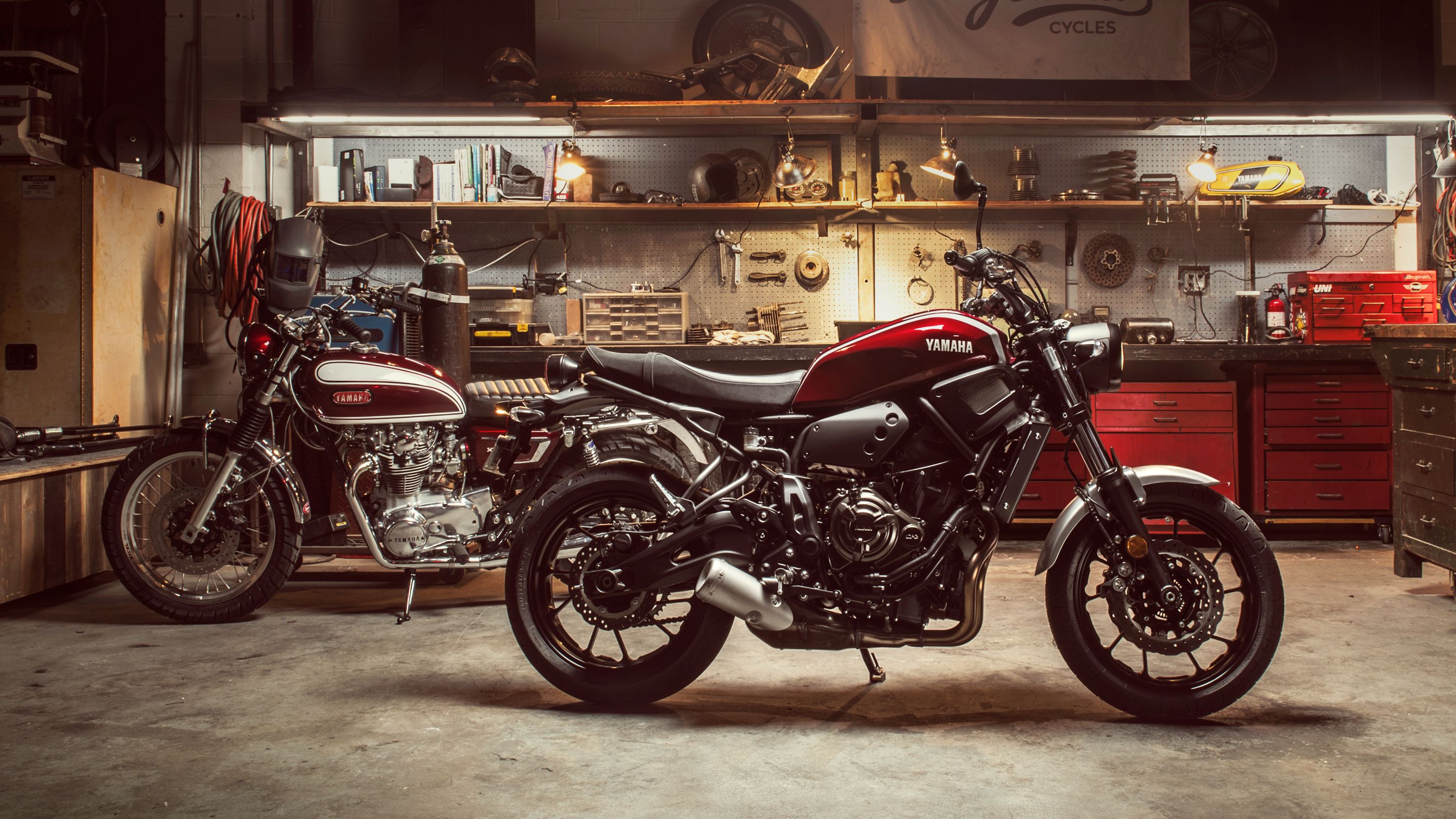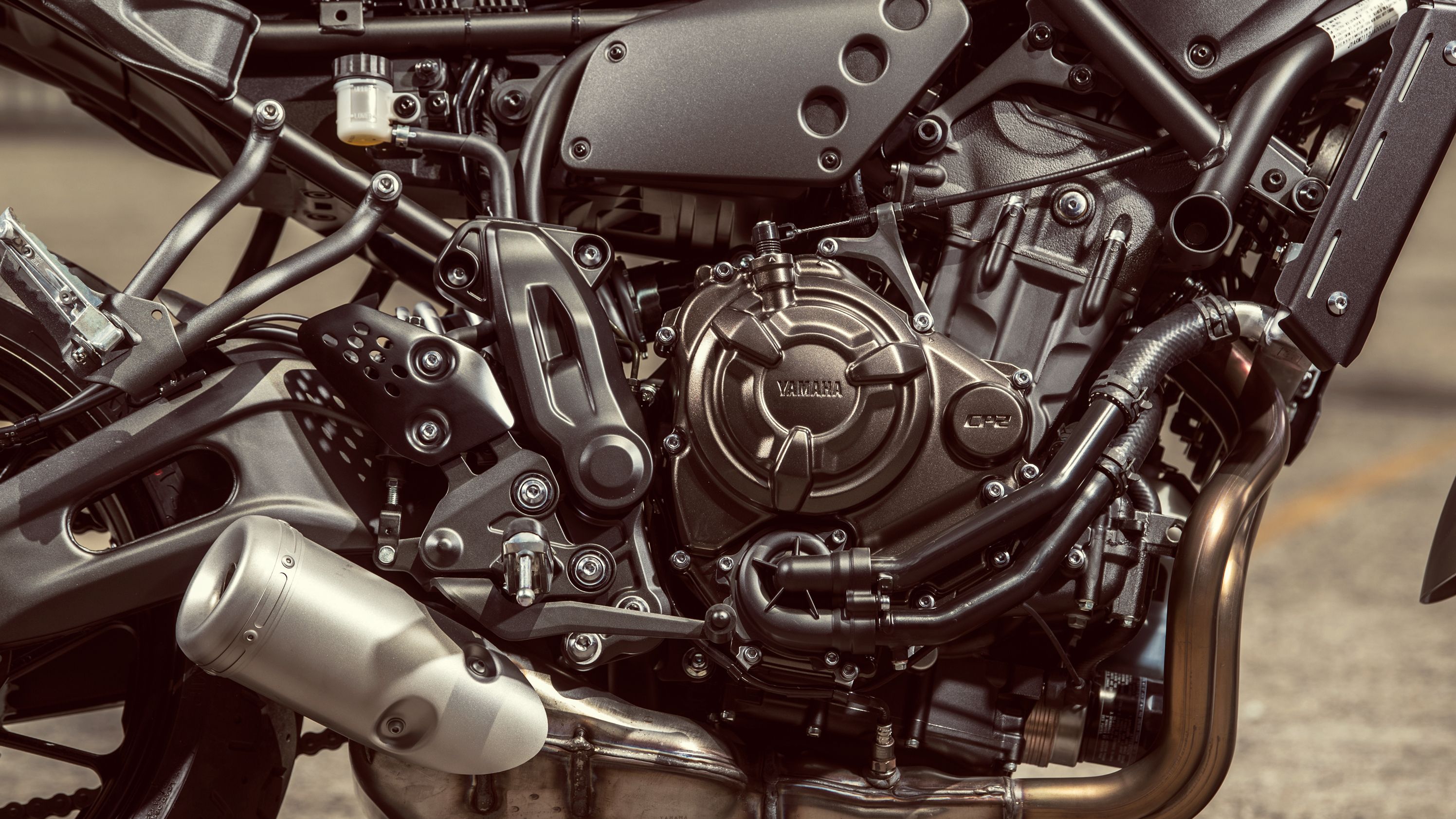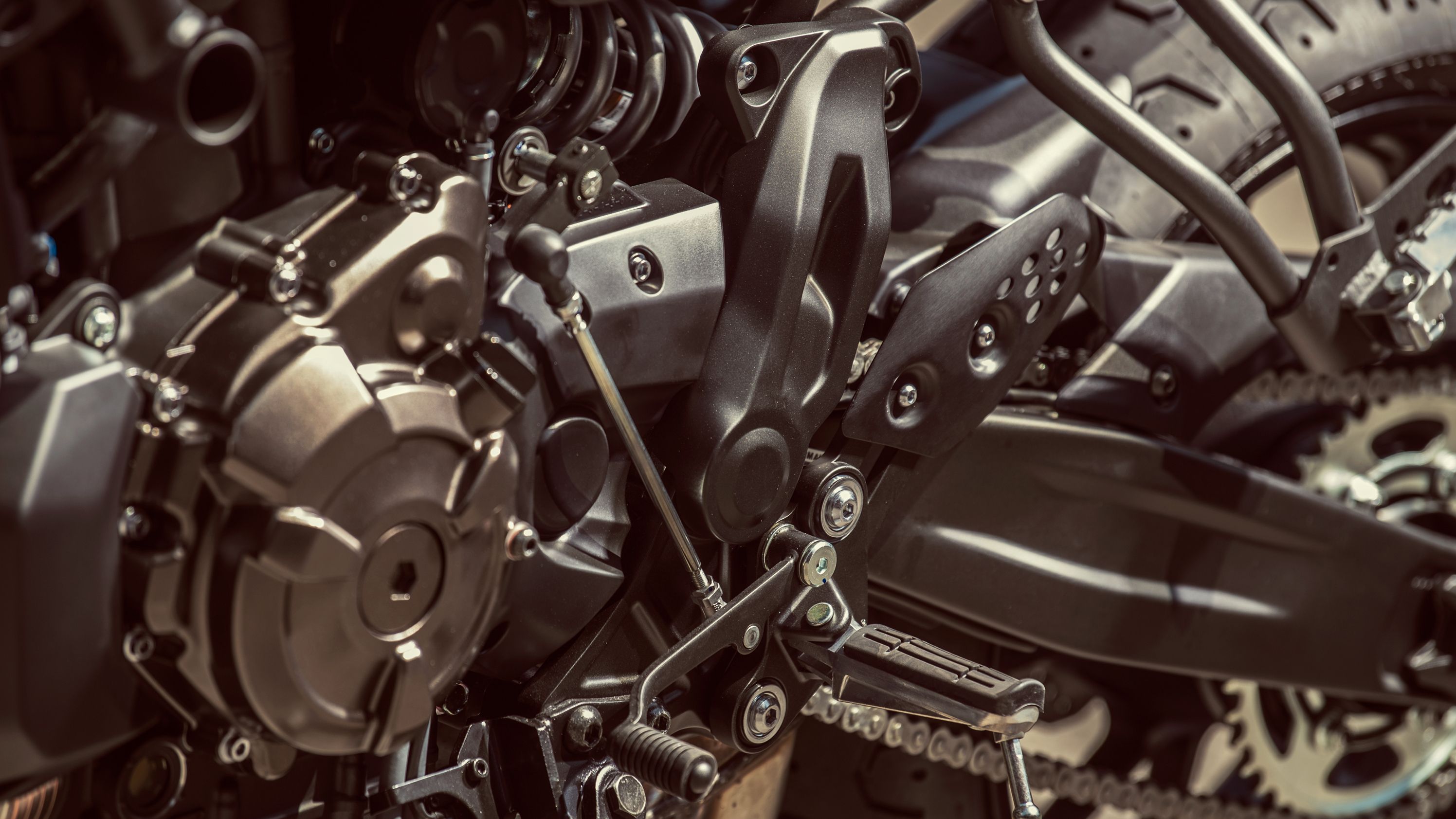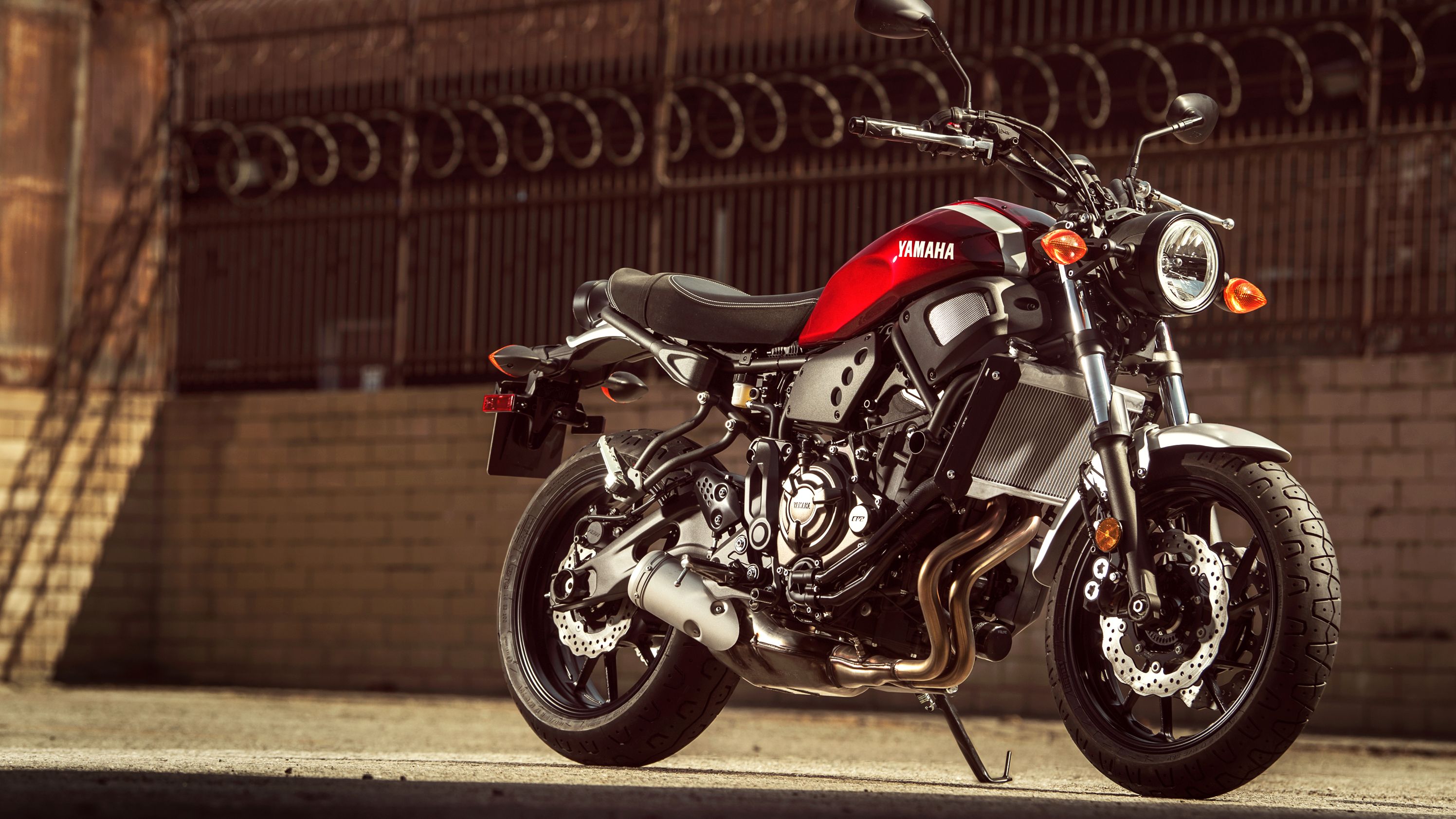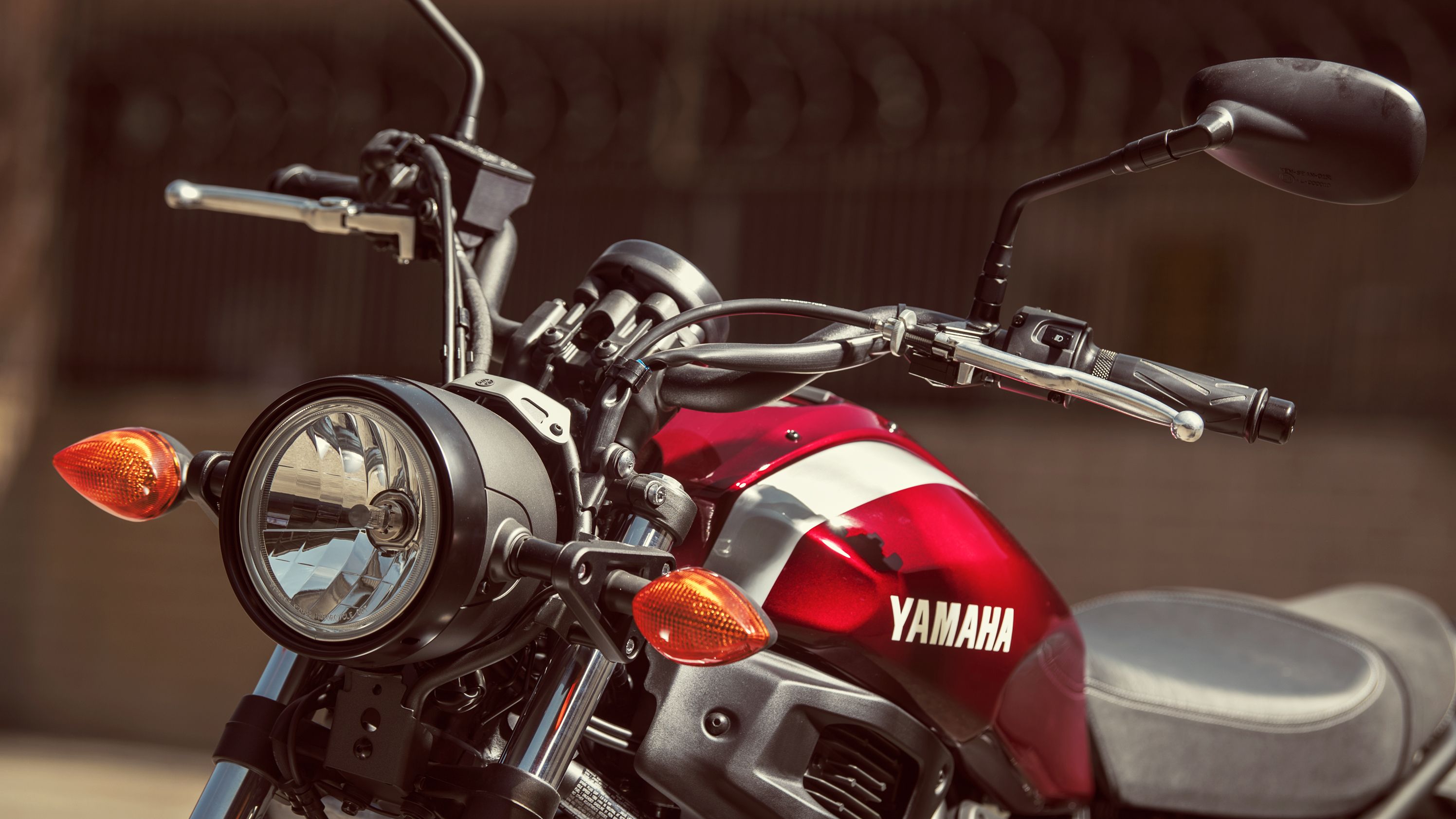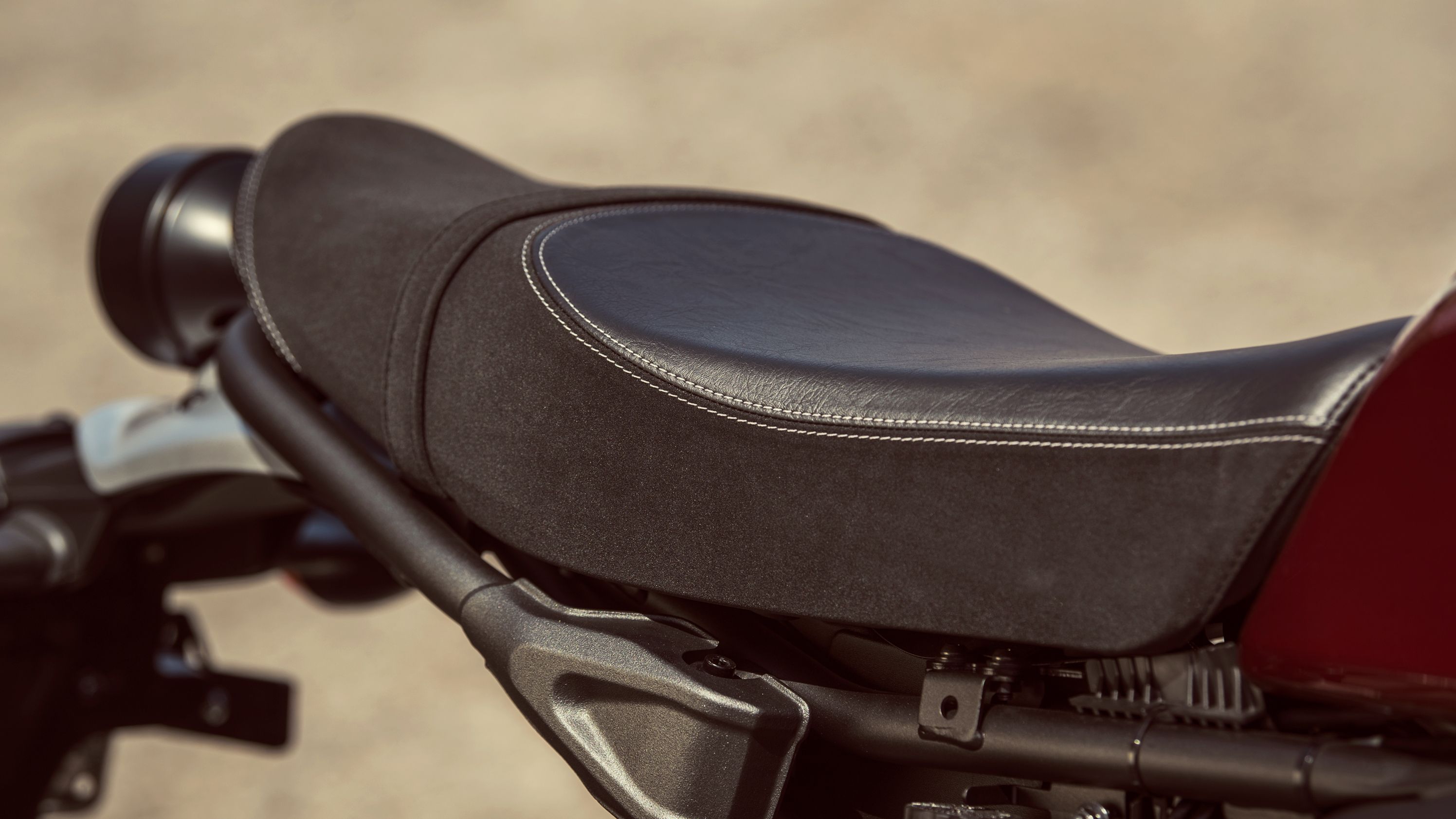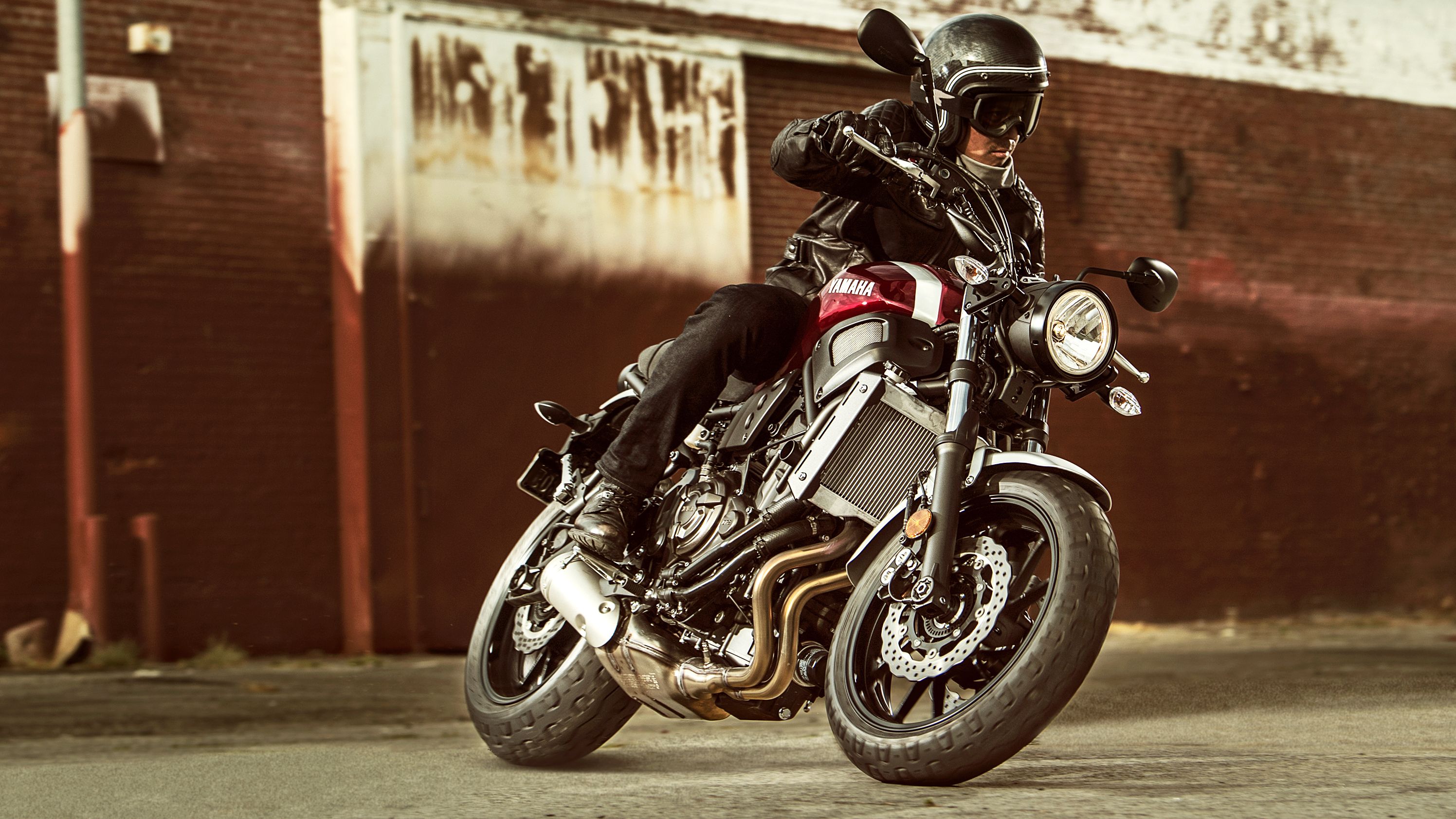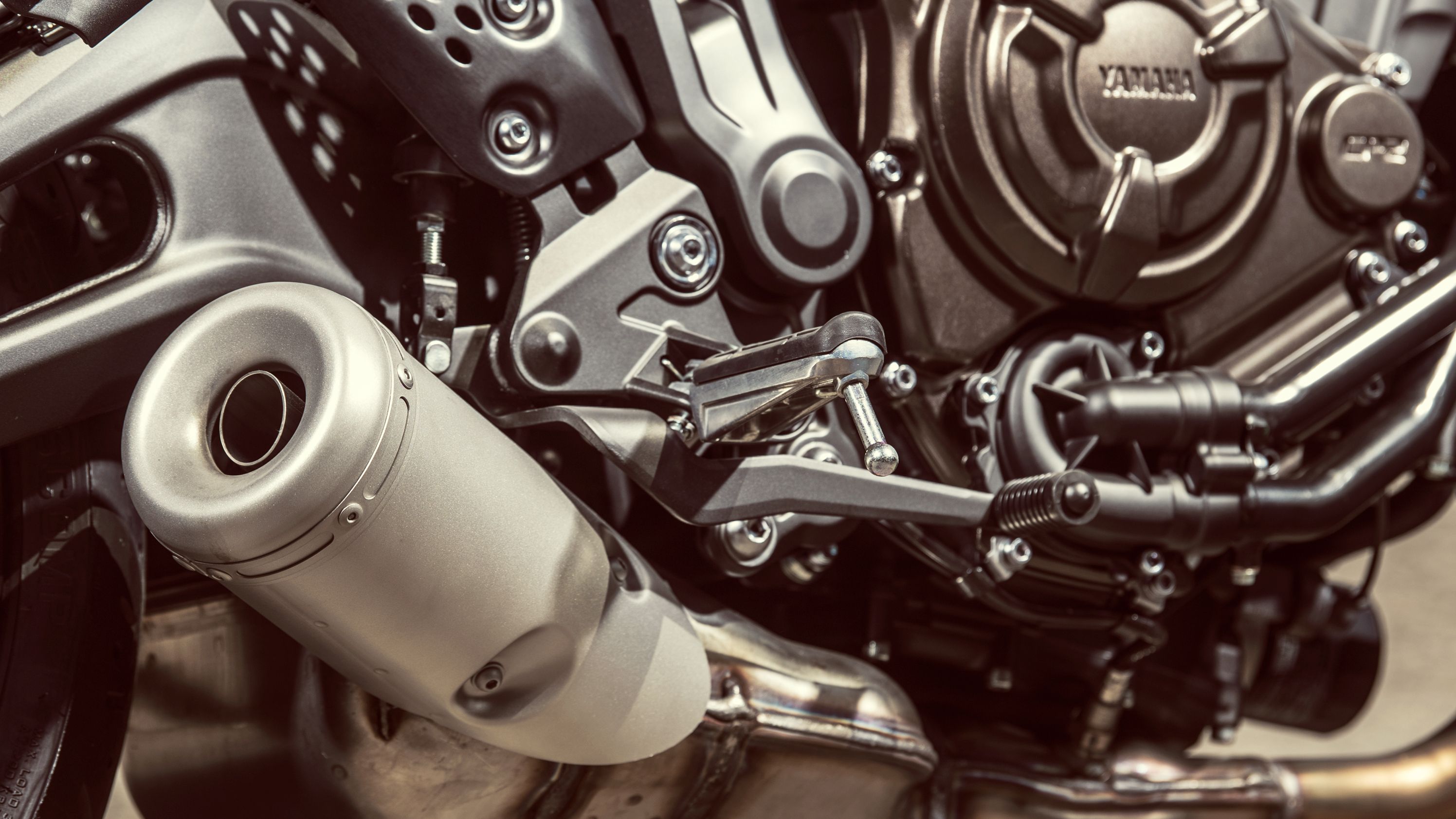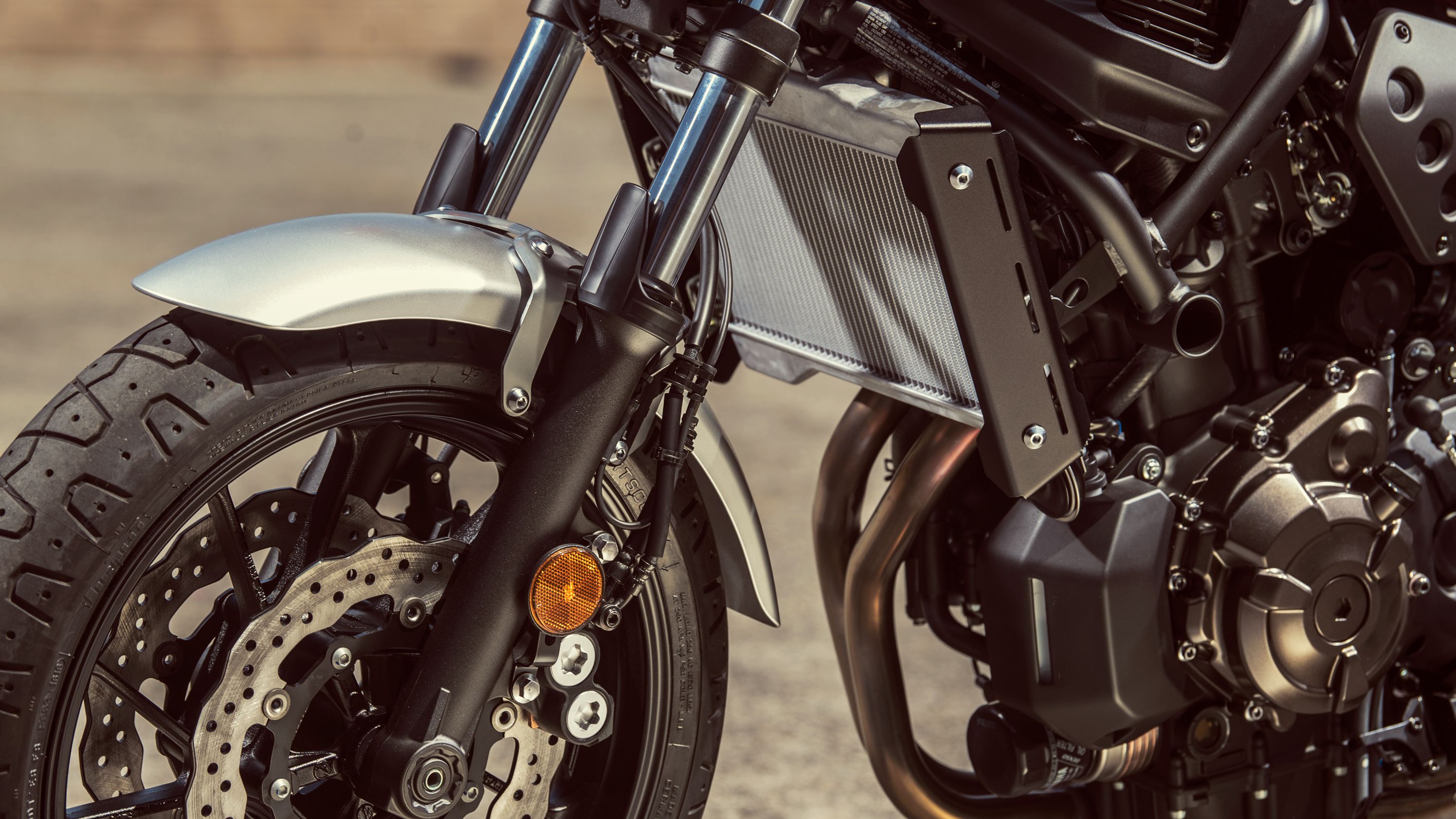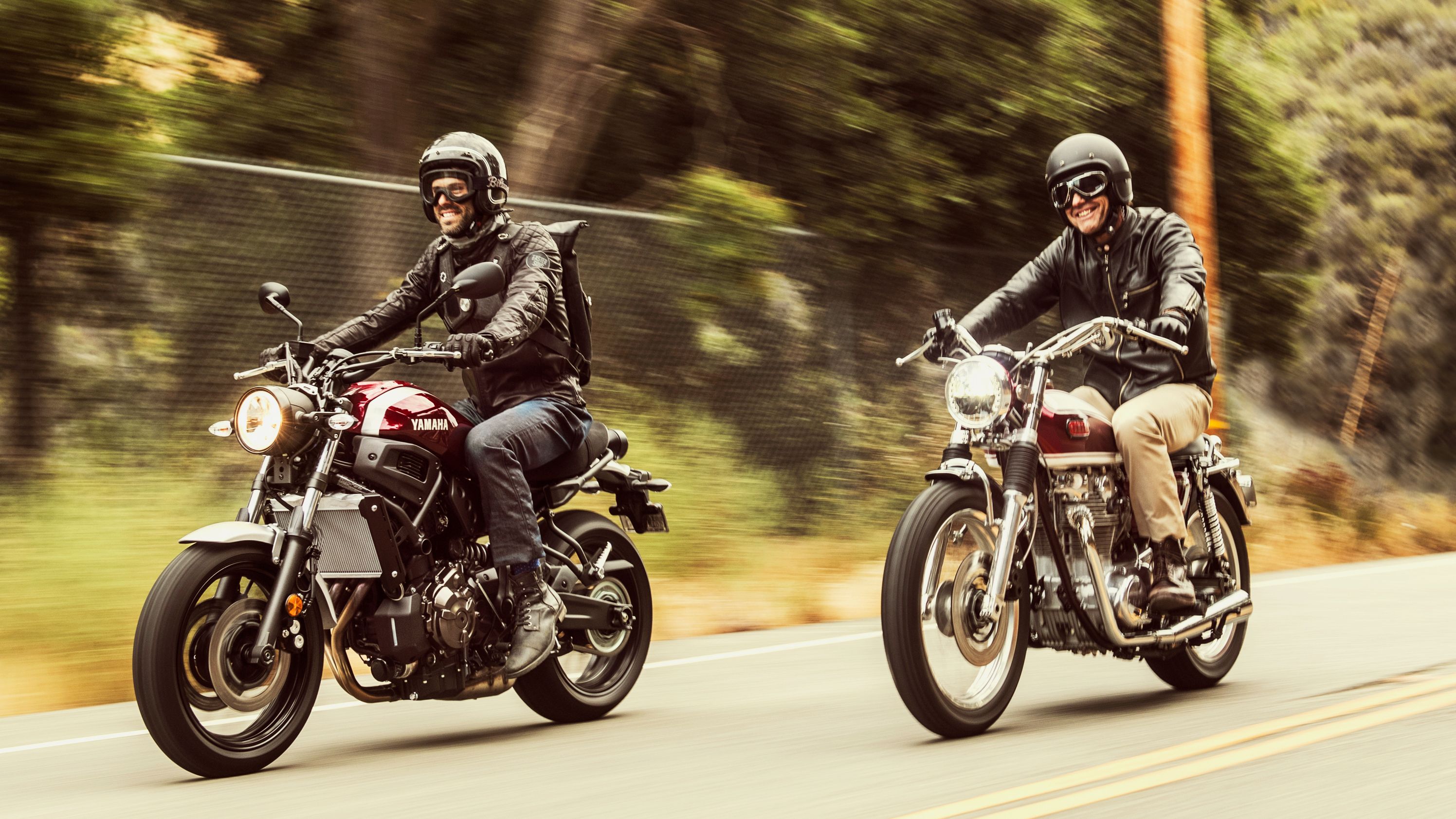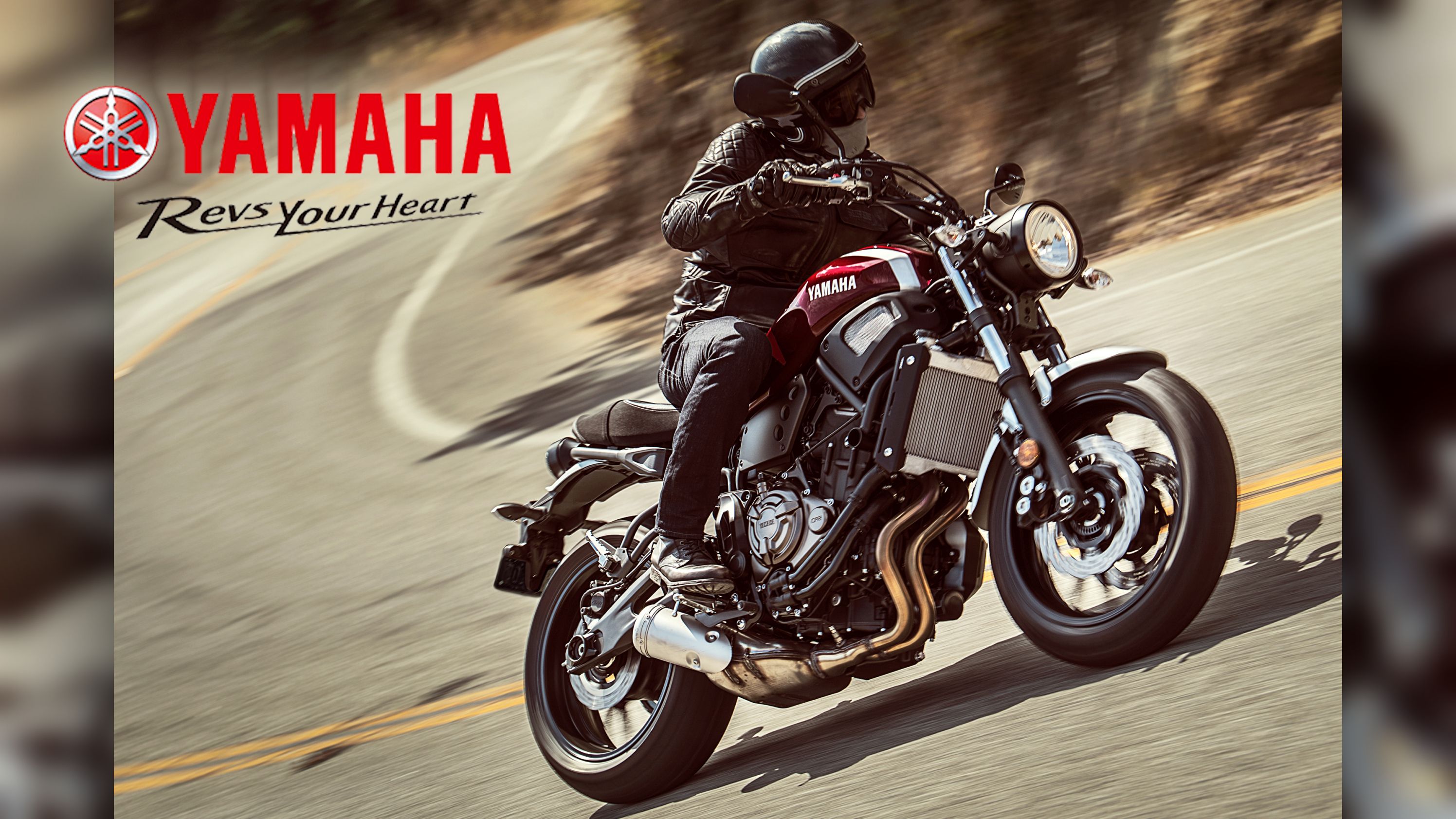Part of Yamaha's “Faster Sons” lineup, the XSR700 is based largely on the proven MT-07 platform. It is a reinterpretation of a vintage design for a modern-retro look, clearly meant to draw in the hipster/Millennial crowd, as well as those with an appreciation for classic design elements.
It's not all about looks, though, the mill churns out a claimed 73.8 horsepower and 50.2 pound-feet of torque to push the 410-pound wet weight, so there's no shortage of thrills to be had on Yamaha's mid-size roadster.
2018 - 2022 Yamaha XSR700 Performance and Capability
The “Crossplane Concept” powerplant on the XSR700 runs with an 80 mm bore and 68.6 mm stroke across two cylinders for a total displacement of 689 cc. A 270-degree firing offset gives the engine a distinctive idle and helps it to develop its full 50.2 pounds of grunt at 6,500 rpm backed up by 73.8 horsepower at 9 grand with a smooth, linear delivery. Yamaha XSR700's top speed is about 120 mph.
The XSR doesn't sport any sort of rider mode feature for variable power delivery. It really doesn't need anything more than a steady right wrist and a dose of skill to keep it under control.
The liquid-cooled mill runs with four-valve heads and a DOHC valvetrain with a hot, 11.5-to-1 compression ratio that will put you at the premium pump every time. While the 270-degree firing order isn't necessarily the smoothest in the world, the factory added a counterbalancer that tames much of the shake to prevent the old tingley-hands syndrome from setting in.
In an effort to keep this bike compact, and those efforts impacted the six-speed transmission, as well, with stacked input and output shafts that reduces the length of the overall drivetrain. A standard clutch makes the connection between engine and gearbox, and though I'm almost a little surprised, I understand that the factory probably did it to keep costs down.
|
Engine & Drivetrain |
|
|
Engine: |
Liquid-cooled DOHC inline twin cylinder; 8 valves |
|
Bore x Stroke: |
80.0 mm x 68.6 mm |
|
Displacement: |
689 cc |
|
Compression Ratio: |
11.5:1 |
|
Fuel Delivery: |
Fuel injection |
|
Ignition: |
TCI: Transistor Controlled Ignition |
|
Transmission: |
Constant mesh 6-speed; multiplate wet clutch |
|
Final Drive: |
Chain |
Design
Yamaha's “Faster Sons” philosophy is to take a heritage look and apply today's technology to make a faster, better handling representation of that vintage style. The XSR700 was the first bike released under the "Faster Sons" banner. The design team took inspiration from the seventies-tastic XS650, but clearly as more of a guideline than an actual rule.
Standard forks with blackout sliders lead the way under a similarly achromatic round cyclops headlight can and triple tree. Though the XS650 sported a chrome front fender, Yamaha opted to shoot a painted finish on a fender that leaves you with the distinct impression that it's cut down. Not only does this fit into the custom vibe established by the painted lower forks, but it touches on roadster territory as well.
The upper lines play along the aluminum fuel tank cover and down a slight drop to a shallow-scoop bench seat. I gotta say that Yammy missed an opportunity when it decided against the tuck-and-roll bench as it had on the 650, but at least it did something other than the usual flange tank that can cheapen the look so much, so kudos on the tank cover, folks.
The slight rise up the removable subframe to the pillion seat is another subtle departure from the 650's lines, and of course, the lack of external shocks dates the XSR as a much later model but I'm okay with that 'cause I like the clean look. A round LED taillight and bullet turn signals finish off the rear lighting with a standoff plate holder that uses the plate itself as part of the fling control.
Lower-than-jockey footpegs place the average rider's legs in a natural position with pullback bars that leave you plenty of room to lean in while retaining the ability to strike an upright riding posture. By all accounts, a comfortable little ride that's ideal for around-town hops, and one that serves as a blank canvas for custom-bike builders.
New-for-2022 updates include an all-new heritage-inspired round LED headlight and a revised cockpit layout. The new layout allows for better visibility.
|
Dimensions & Capacities |
|
|
L x W x H: |
81.7 in x 32.3 in x 44.5 in |
|
Seat Height: |
32.1 in |
|
Wheelbase: |
55.3 in |
|
Ground Clearance: |
5.5 in |
|
Fuel Capacity: |
3.7 gal |
|
Fuel Economy: |
58 mpg |
|
Wet Weight: |
410 lb |
|
Top Speed: |
120 mph (est) |
Chassis
Tubular-steel members make up the diamond-type frame and bolt-on subframe on the XSR700 with the stressed engine pulling double-duty as part of the frame structure to help keep the overall weight down. Suspension components come off the bottom shelf for this ride. The 41 mm front forks come with fixed damping and preload values, and the coil-over mono-shock out back gets the obligatory preload adjustment and nothing else.
Still, the 5.1 inches of travel should prove plush enough for the roughest streets, and methinks perhaps a set of knobbies would set the XSR up as a proper scrambler with numbers like that. As it is, the 17-inch Pirelli Phantom Sportcomp hoops serve as excellent street-touring tires for non-scrambler-like activities.
A pair of four-pot calipers bite the dual, 298 mm wave-cut discs (over 5 percent larger than last year) with a 245 mm disc out back and all-around ABS coverage as part of the standard equipment package. No, you don't get a choice on that last bit, but honestly, if this is your first bike it will probably be hard to find a new non-ABS ride by the time you get ready to upgrade. Besides, the system Yamaha employs is pretty smooth and unobtrusive, so most of the arguments against it go out the window. Most of them, anyway.
|
Suspension, Front/ Travel: |
41 mm telescopic fork/ 5.1 inches |
|
Suspension, Rear/ Travel: |
Single shock, adjustable preload/ 5.1 inches |
|
Rake (Caster Angle): |
25.0° |
|
Trail: |
3.5 in |
|
Brakes, Front: |
Dual hydraulic disc, 298 mm; ABS |
|
Brakes, Rear: |
Hydraulic disc, 245 mm; ABS |
|
Tire, Front: |
120/70ZR17 Pirelli® Phantom Sportcomp |
|
Tire, Rear: |
180/55ZR17 Pirelli® Phantom Sportcomp |
2018 - 2022 Yamaha XSR700 Price
For 2022, MSRP is $8,799, and offered in Raven black. Yamaha has you covered with a one-year limited warranty on your new ride.
|
Pricing |
|
|
Warranty: |
1 Year Limited Factory Warranty |
|
Color: |
|
|
└ 2018: |
Matte Gray/Aluminum; Raspberry Metallic |
|
└ 2019: |
Aluminum/Red |
|
└ 2020, 2021: |
Radical White/Rapid Red |
|
└ 2022: |
Raven |
|
Price: |
|
|
└ 2021: |
$8,499 |
|
└ 2022: |
$8,799 |
Competitor
For my head-to-head with the Yamaha XSR700, I went to Italy to look at what Ducati has for us. Ducati capitalizes on the Hipster movement by adding a decidedly seventies-ish brown, orange, and yellow graphic to its already retro-tastic Scrambler family to make the “Mach 2.0” model. Since scramblers are really just modified standards, these two bikes share a common heritage.
Ducati Scrambler Mach 2.0
Ducati starts out by cutting the front fender down to the bone for a custom appeal and followed it up with modern inverted forks. Blackout treatment is another constant with the fork uppers, triple tree, and headlight can all sporting the black paint that finds the engine, swingarm, and points in-between on the Mach. The Ducati has a more natural-looking tank, because well, it is a tank in the classic sense of the work and not a clever cover.
A faux tuck and roll saddle enhances the Mach's seventies pedigree. Though it doesn't fit the target era, the plateholder hugger in back really cleans up the tail for an attractive rear end.
Besides being inverted, the Duc's stems are about the same vanilla offering that you get from Yamaha, but the rear shock comes with adjustable rebound damping on top of the preload adjuster for a slight advantage to the Italians in the suspension department. Travel is comparable with Ducati claiming 0.2-inch greater range of motion at both ends. Yamaha gets some back in the anchors with dual front brakes up against a single 330 mm front disc on the Mach though both run with ABS as standard equipment.
Ducati keeps it classy with an air-cooled L-twin mill that boasts 803 cc with 73 horsepower and 49 pound-feet of torque, again comparable to the XSR and plenty for the 410-pound wet weight. Yamaha gets a final, and perhaps fatal, shot in at the checkout with an $8,799 sticker that falls well under the $10,795 MSRP on the Scrambler Mach 2.0.
He Said
“Maybe it's 'cause I remember the bikes from the 70s, but I really am not seeing all that much crossover. I get that they are just alluding to a time period, but I have to wonder if maybe they should have just owned it and gone all out like Honda did with its CB1100. We'll see how it performs in the U.S. Market. That will be the proof in the pudding.”
She Said
My wife and fellow motorcycle writer, Allyn Hinton, says, "This is a roadster version of the MT-07, but with a more relaxed riding position. The bars are wider, higher, and pulled back a bit to give you that more upright rider triangle. A feature that I think is rather nice is the ability to easily customize the bike. Pop off the seat -- yes, just that easy -- remove four screws and the whole subframe comes off instantly making it a bobber. That kind of simplicity really appeals to me. It's an awesome bike, and I'm glad to see it available in the American market."
Further Reading
Yamaha
Read more Yamaha news.


